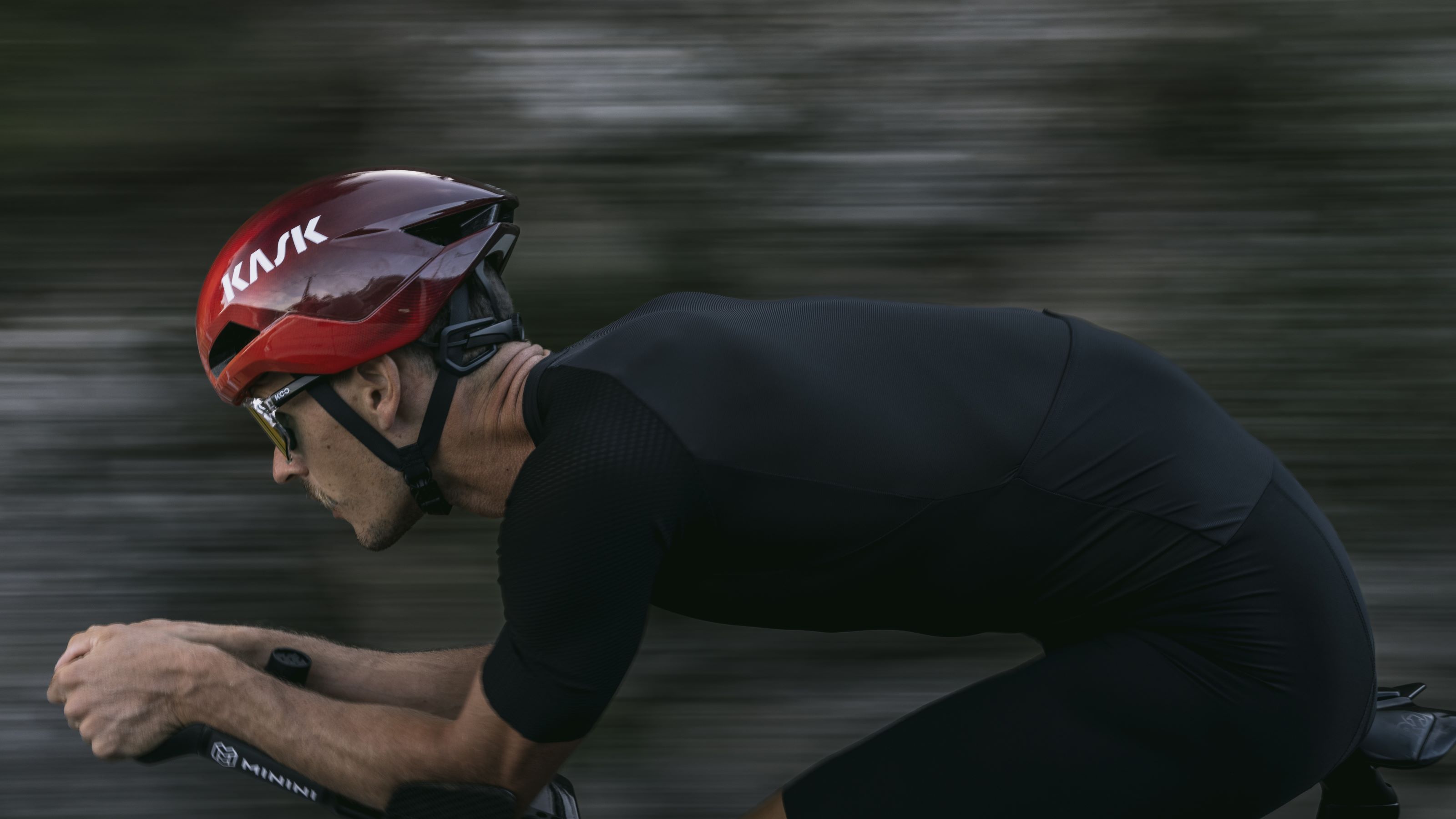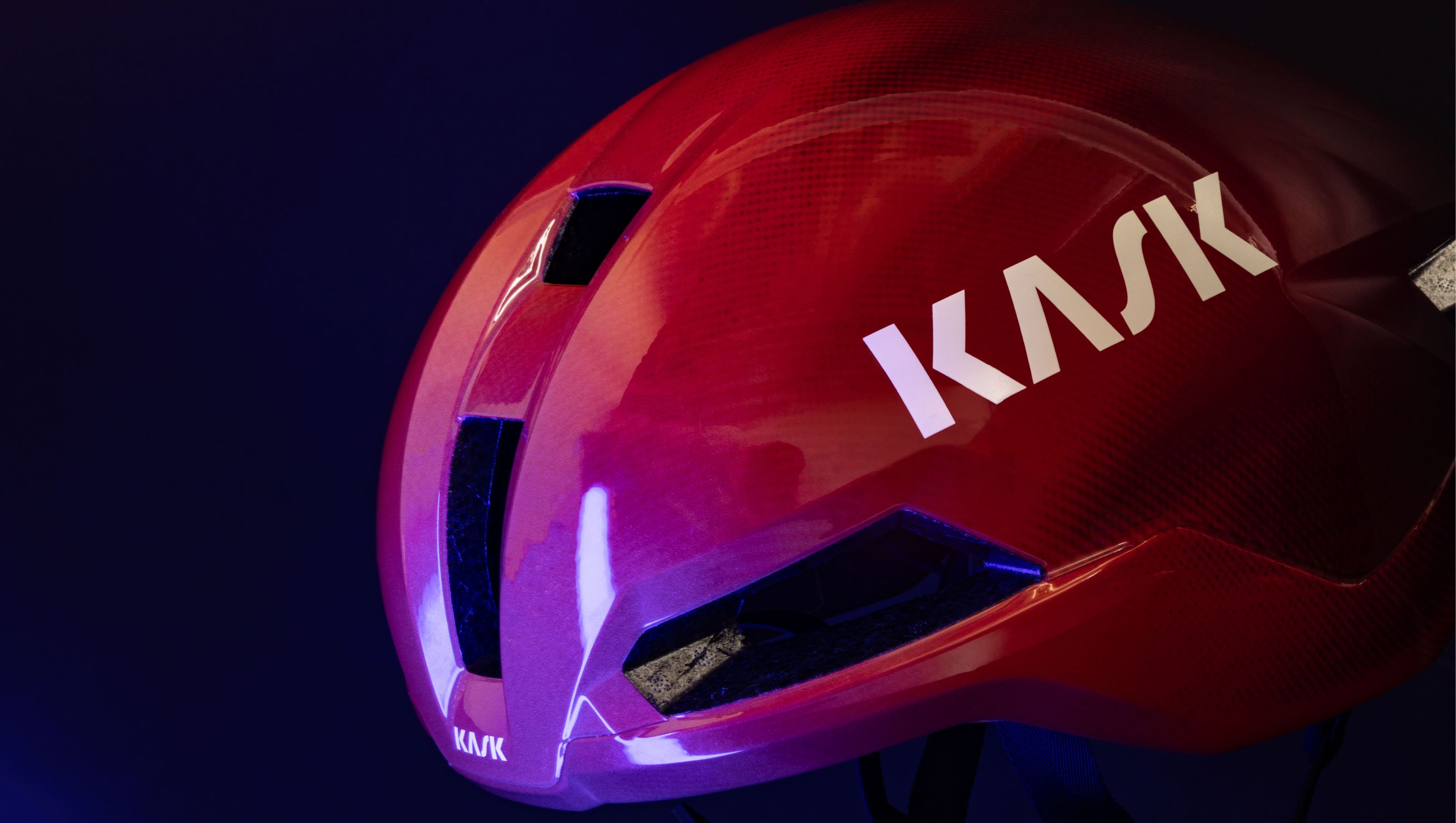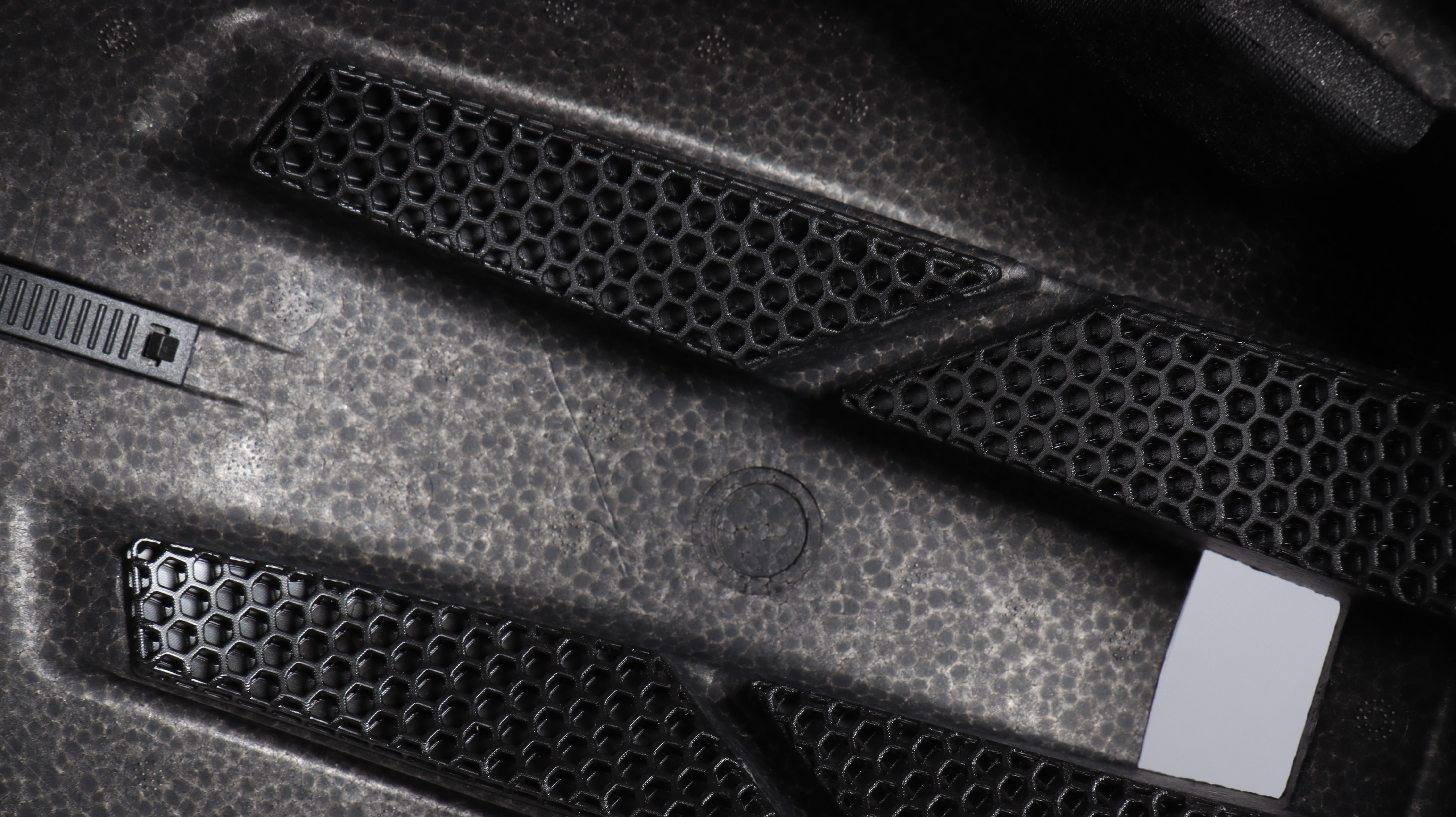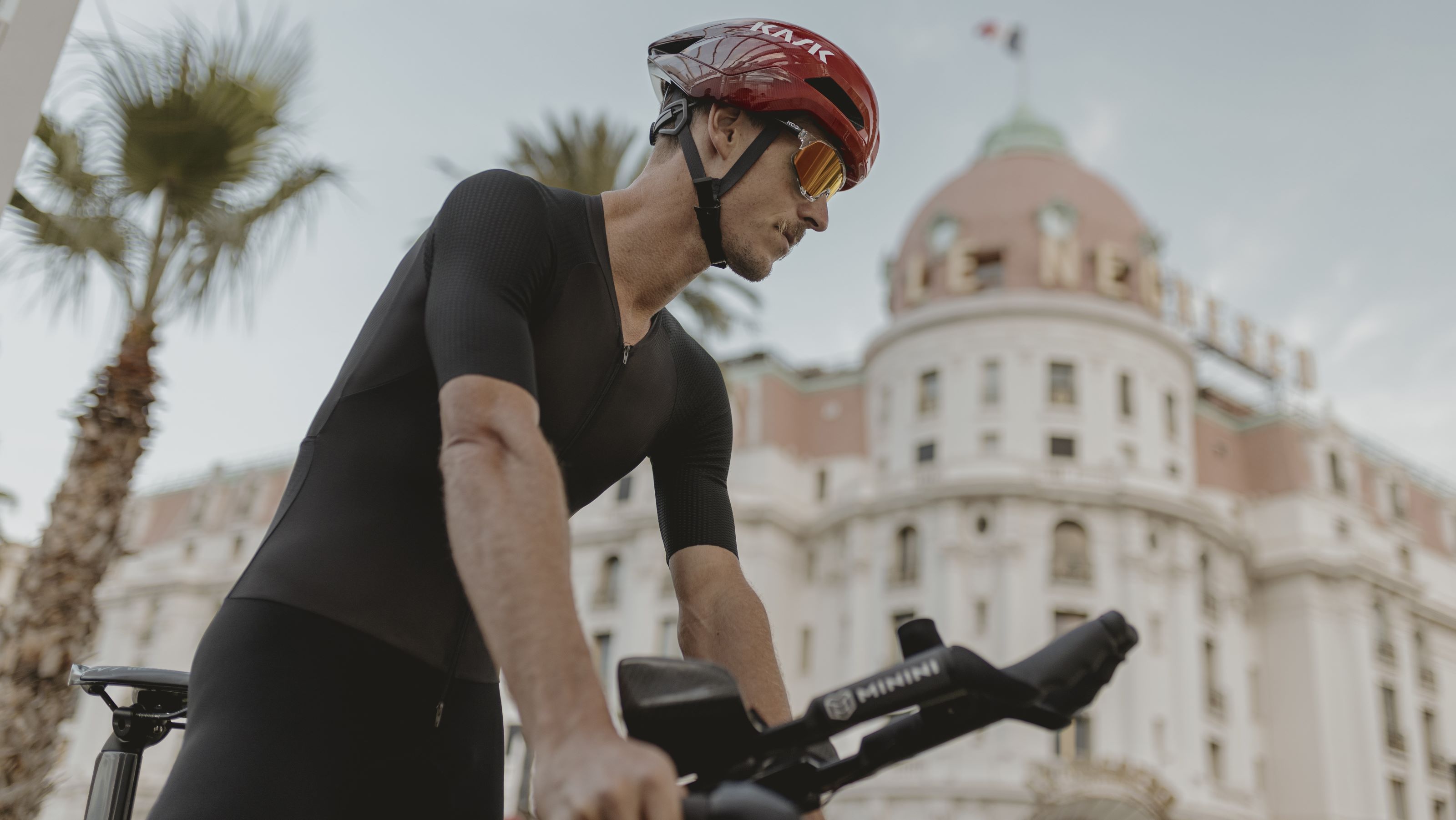
Kask says that its new Nirvana helmet offers significantly better ventilation than many of the best aero helmets, as well as increased protection. It claims that the Nirvana is a good option for riders obsessed with aero performance, not just for road racing, but also on the track and in triathlon.
We spotted the new helmet on the heads of the Ineos Grenadiers pros, including Filippo Ganna, in pre-season training at the start of 2024, so it's taken a while for Kask to officially launch the new helmet. At the time, we postulated that it was a new Utopia Y, but we're told the two will exist in tandem.
Kask does claim significantly better performance for the Nirvana than the Utopia Y across several criteria though.
In its comparative tests, Kask says that the Nirvana was more aero at 45km/h and a range of wind yaw angles from 0 to 20 degrees than its Utopia Y, with a 35% drag reduction. This equates, Kask says, to a 7.2-second gain over 20km at 50km/h, equivalent to six watts saved.

The Nirvana’s ear covers, which envelop the upper part of the ear lobes, are claimed to contribute to the smoothed airflow. They’re similar to those in the semi-enclosed design of the Poc Procen Air, also recently launched, which (with a visor, a feature not offered by the Nirvana) we found to be the most aero of 24 helmets in our recent wind tunnel helmet tests – another trend in helmet design incoming?
Unfortunately, the availability of the Nirvana came too late to make it into that wind tunnel test, but we'll endeavour to return and see how it fares against the Procen, the S-Works Evade III, and others.
Kask says that the Nirvana's aero performance isn’t at the expense of ventilation, which it claims has increased by 19% over the Utopia Y, for better thermal comfort for the rider.
3D printed lattice padding

Kask points out that racing speeds are increasing, so aerodynamics is becoming ever-more important than weight. There's a higher need for protection too, given the increase in potential impact velocity.
The Nirvana helmet includes a technology it calls Multipod, as first seen in the Elemento helmet, launched last year.
Multipod is a 3D-printed variant of the helmet's internal padding, with a hexagonal lattice structure. It’s built into the helmet and, in the case of an accident, can collapse but can also shear between planes to provide additional non-linear impact protection.
Kask claims that this increases rotational energy absorption by 10% in its WG11 safety testing protocol.
Kask points out that Multipod’s impact absorption is the same regardless of the direction of impact. The lattice structure also has the benefit of increasing the Nirvana’s ventilation. There’s additional merino wool padding at the front and sides of the helmet to ensure sweat absorption.
Other features of the Kask Nirvana helmet include a faux leather chin strap, reflective details at the rear, and an eyewear docking port in the front vents, despite that being aerodynamically detrimental. At the rear, the helmet uses Kask’s Octofit+ fitting system to ensure a secure fit.
Weights and prices

Kask claims a weight for the Nirvana of 270g in Europe and 290g elsewhere, depending on the requirements to meet regional safety standards. As with all its helmets, the Nirvana is made in Italy.
The Nirvana is available in five different colours, including the Cherry Burst orange fade favoured by the Ineos Grenadiers pro team. It's one of three gradient colour schemes offered, which are a first for Kask, as its previous helmets have all been a uniform single colour.
There are just two sizes available, rather than the more normal three, with a M catering for head sizes from 52cm to 58cm and an L for 59cm to 62cm.
Kask’s SRP for the Nirvana helmet is £320 / $400 / €360 / AU$570, rivalling the Elemento.







